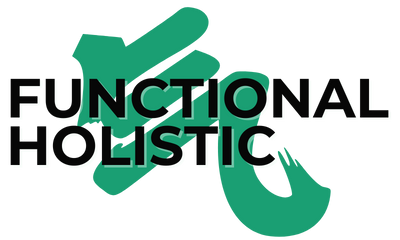Can Hair Loss from Stress Grow Back? Here’s What I’ve Seen in Clinic (and in the Mirror)

Stress doesn’t just mess with your sleep or make you crave chocolate at 11 PM.
It can literally pull your hair out.
When your hair starts falling out after burnout, a breakup, or months of overworking, it’s not random. It’s a signal.
As a TCM practitioner and acupuncturist, I’ve helped people regrow hair after major stress by restoring what their system was actually missing: stability, nourishment, circulation, and recovery. Not just better shampoo.
So… Can Hair Loss from Stress Grow Back?
Yes. It absolutely can. If you treat the root cause.
Most people dealing with stress-induced shedding are experiencing something called telogen effluvium. It’s when your hair follicles hit pause on growth and head straight into the shedding phase.
Your brush starts looking like it needs its own hairbrush. But the good news? It’s usually reversible once your system recovers.
There’s even hard science behind this. A 2024 study found that chronic stress releases a hormone called CRH (corticotropin-releasing hormone), which blocks your hair follicles from regenerating.
Think of it like your body’s “red alert” mode pulling power from non-essential systems, like hair growth, to survive the storm.
The trick is convincing your body the storm is over.
Hair Loss Is a Symptom, Not the Root
In Traditional Chinese Medicine, hair loss from stress is often tied to depletion in the blood, kidney essence, and digestive energy. Basically: the systems that fuel growth, reproduction, and repair.
So if your hair’s falling out, and you’re also dealing with fatigue, low libido, weak digestion, or irregular cycles, you’re not imagining the connection.
From an allopathic view, it tracks too. Chronic stress hits your nervous system, digestion, and hormone pathways, and all of those affect the scalp.
Your body’s too busy surviving to send resources to hair follicles.
The Temple Thinning Pattern: Classic Stress Clue
Thinning at the temples?
That spot’s basically the canary in the coal mine when it comes to stress and hormone-related hair loss.
And if you’ve got a family history of balding, stress can speed that process up like it’s late for work.
But here’s the kicker: I’ve seen those temples fill back in once the stress is addressed.
The sooner you catch it, the better your chances of seeing regrowth.
What About Vitamin Deficiencies?
Yes, stress drains your nutrient reserves too. You might be low in:
- B vitamins, especially biotin and B12
- Vitamin D, essential for follicle signaling
- Zinc, for inflammation and repair
- Iron, especially ferritin, which supports the hair growth phase
But popping supplements won’t do much if your gut can’t absorb them, your blood flow is poor, or your body’s still in fight-or-flight.
Why Root-Cause Recovery Is What Actually Works
Hair regrowth isn’t about finding a magic product.
It’s about making your body a place where hair wants to grow.
That looks like:
- Calming your nervous system
- Rebuilding nutrients in a way your body can actually use
- Restoring healthy circulation, because if your scalp isn’t getting nourishment, follicles stay stuck
- Addressing your unique pattern: stress, hormones, or otherwise
I break this all down step-by-step in my guide, from a TCM lens but in plain language.
It’s based on what’s worked for my clients and in my own recovery from stress-triggered thinning.
If You’re Still Asking, “Can Hair Loss from Stress Grow Back?”
Yes. But it takes more than wishful thinking or another serum.
And hey, you don’t have to drop hundreds of dollars trying to figure it out on your own.
I built this guide to help you fast-track the recovery process.
Cut through the noise and start addressing the causes of YOUR hair loss by clicking here: The 30 Day Pattern Mapping™ Regrowth System.
This guide is a shortcut to real results, no matter the state of your hairline.






